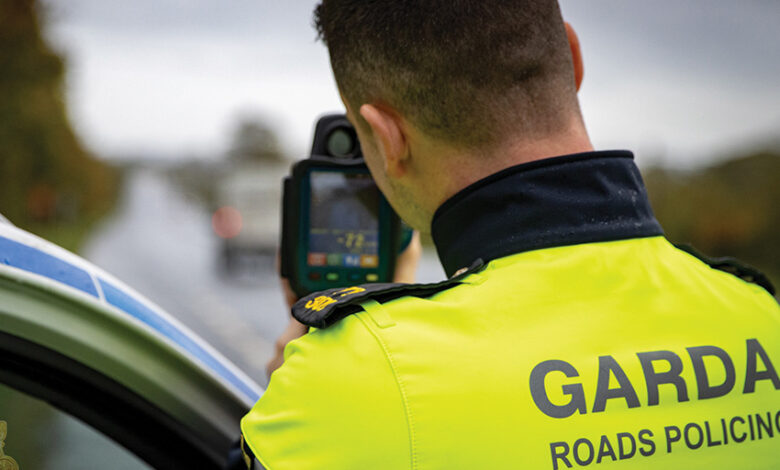Five years of change for An Garda Síochána

Just over five years ago, An Garda Síochána was reeling from a series of significant controversies and failings that resulted in the Government appointing the Commission on the Future of Policing in Ireland to recommend major reforms of the organisation.
The Commission, which was chaired by the former Commissioner of Boston Police Kathleen O’Toole, outlined a series of measures to improve governance, ensure gardaí are supported in the work they do, enable policing to be information-led, and make sure An Garda Síochána was adaptive and innovative.
Just weeks before the publication of the Commission’s report, the Government appointed Drew Harris as Garda Commissioner following an international competition by the Policing Authority. Harris was mandated by government to implement its policing reform programme based on the Commission’s report, A Policing Service for Our Future.
Fast forward five years and much has changed in An Garda Síochána. The pace and scale of delivery of the reform programme has resulted in better equipment and systems; enhanced health and welfare supports for gardaí; improved services to the public, particularly the most vulnerable in society; and a range of measures to increase governance and accountability.
An Garda Síochána is also more open and transparent, has a much stronger emphasis on the importance of ensuring the human rights of everyone they come into contact with, and is more responsive to feedback from stakeholders.
For the public, there has been a strong focus on preventing and detecting key crimes such as domestic abuse, cyber-crime, and drug dealing through the expansion of specialist units. For example, protective service units have been set-up in every Garda division with 300 highly trained specialist gardaí investigating domestic abuse, sexual violence, and child abuse.
Following feedback from gardaí, there has been a number of measures introduced to support them. This has included an increase in welfare supports, a new operational uniform, the largest fleet in the organisation’s history, and more safety equipment.
There has also been a new, more transparent promotion system, and a large increase in the number of front-line supervisors.
In terms of information-led policing, major new ICT systems have increased efficiency and effectiveness, enhanced the safety of gardaí, and strengthened governance. These include a roster and duty management system that enables supervisors to better deploy resources when and where they are needed most; a new nationwide dispatch system that improves the efficiency of how gardaí respond to calls for service from the public and enhances the safety of gardaí by giving them detailed information on potential high-risk calls; and an investigation management system that enables digital management of all material relating to an investigation.
In addition, over 13,000 gardaí have the world-leading Garda mobility app giving instant access to a wide-range of policing information, as well as the ability to dispense fixed charge notices at roadside. An Garda Síochána also has access to real-time police data and intelligence from 30 European countries after connecting to the Schengen Information System.
Organisationally, the most ambitious structural change programme in the history of An Garda Síochána is being implemented. The Operating Model will see a more localised policing service delivered based on local demand.
Up until recently, An Garda Síochána’s structure was the same as when it was founded 100 years ago. The Operating Model will enable An Garda Síochána to respond to the significant changes to Irish society and the nature of crime now and into the future. Seven of the 19 Garda Divisions are already fully live with the new structures, with the other divisions at different stages of advancement.

To ensure the highest standards of behaviour within An Garda Síochána, an Anti-Corruption Unit has been established. While the main focus of the unit is on compliance, it also investigates any potential misconduct by Garda personnel.
“This has not been change for change’s sake. It has been focused on enhancing the service we deliver to the people and the State, and supporting gardaí in doing their jobs efficiently and effectively.”
Shawna Coxon, Deputy Garda Commissioner, Strategy, Governance and Performance
And there are more changes to come. Body cameras for Gardaí will begin to be trialled by mid-2024, a recruitment and retention strategy is being developed, and initiatives to promote community participation in policing are advancing.
Of course, in the midst of all this change was the Covid-19 pandemic. The delivery of a policing service in a national emergency based on An Garda Síochána’s ethos of policing by consent demonstrated the value of the organisation’s tradition of community-focused policing.
“An Garda Síochána has delivered a significant amount of change over the last five years under A Policing Service for Our Future. But this has not been change for change’s sake. It has been focused on enhancing the service we deliver to the people and the State, and supporting gardaí in doing their jobs efficiently and effectively,” says Deputy Garda Commissioner, Strategy, Governance and Performance, Shawna Coxon.
The public appear to agree. At the height of the scandals and controversies, public trust had fallen considerably and the organisation was seen as outdated. Now, according to the 2022 Garda Public Attitudes Survey, An Garda Síochána has one of the highest public trust ratings of any police service in the world at 90 per cent.
In addition, 75 per cent of people say they are happy with the Garda service provided to them locally, 73 per cent believe that An Garda Síochána is modern and progressive, and nearly 70 per cent say it is well-managed.
“However, despite all this modernisation and positive change, what will not change is our approach to policing. Our key strength throughout our 101-year history has been the strong connection we have with communities. If anything, we want to deepen that connection over the coming years,” adds Coxon.
W: www.garda.ie






